A hundred flowers bloom in Wan Chai: A tour of Wan Chai’s religious sites
Last time I visited the old buildings in Wan Chai, today I went one step further and visited a religious resort in Wan Chai District. It turns out that there are more than ten religious buildings in Wan Chai District. This is not only because many South Asians lived here in the early days of Wan Chai, but also because Happy Valley, which belongs to Wan Chai District, was the site of many religious cemeteries in the past. place.
Starting from Hysan Place in Causeway Bay, you can reach Charity House via Lee Garden Hill Road and Leighton Road. The Charity Building was formerly a Zoroastrian temple and has now been converted into a commercial building, but the building still retains the symbols of the sect. Zoroastrianism was originally the state religion of Persia. It believed in the existence of two gods, good and evil. It was founded by the prophet Zoroaster, so it is also called Zoroastrian (another translation of Charity). Due to the rise of Islamic culture, some Persians fled to India and called themselves Parsees. In the early days of Hong Kong's colonization, some Parsis came to Hong Kong from India to do business and left their mark on Hong Kong, such as Mody Road and Ruttonji. Hospital etc. To this day, there are still a small number of Parsis people settled in Hong Kong. According to legend, their altar is still preserved in the Charity Building to enshrine the eternal flame.
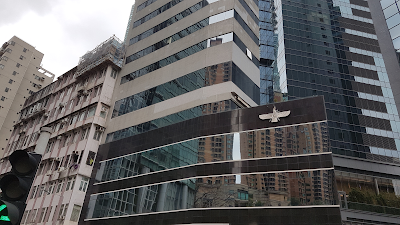
Go up the hill from Charity House along Caroline Road and pass through Lohas Road to St. Margaret's Cathedral. St. Margaret's Hall is designed in the classical revival style and has a unique majesty. The wedding before the ending of the movie "Love" was filmed here. Go down the hill from the church and follow the tram road into Happy Valley. On the Happy Valley Shanguang Road, there is Tung Lin-kok Garden. It is a Buddhist building founded by Ho Tung and his wife Zhang Liang-kuo, so it was named after the husband and wife. Tung Lian Kuk Yuen contains many calligraphy and gifts from celebrities of the Republic of China, such as Kang Youwei, Li Yuanhong, Zhang Xueliang and others, recording the influence and relationship between Hong Kong's richest man, Robert Ho Tung, and his son, General Ho Sai-li, on the Republic of China. Behind Tung Lian Kyew Garden, there is a Jewish cemetery. The Jews, like the Parsis, also made a great contribution to the development of Hong Kong in the early days of the opening of the port. Famous Hong Kong Jews include the Kadoorie family who founded the Peninsula Hotel, Sassoon, Beliros, etc.

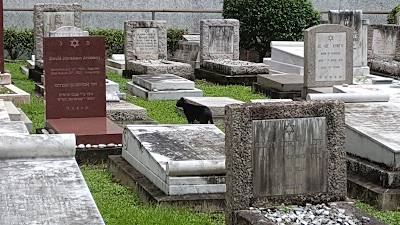
Walking down from Tung Lin Kok Court and passing the Hong Kong Sanatorium and Hospital, you can reach the only Hindu temple in Hong Kong. Unfortunately, the Indian temple has been closed due to the epidemic, and the temple is built in the relatively plain style of North India, so I have no chance to see the colorful South Indian temples full of statues that are common in Southeast Asia in Hong Kong. Next to the Hindu temple are the Hindu Cemetery and the Parsi Cemetery; interestingly, according to religious customs, Hinduism advocates cremation and scattering ashes on the river, while Zoroastrianism pays more attention to sky burial, so theoretically believers of both religions will not be buried In the cemetery. Is it because they do as the Romans do and believe that people should "be at peace in their graves"?

In the early days of the opening of the port, Happy Valley was still an undeveloped valley with serious miasma, so most of the cemeteries were located here. It was not until the construction of a racecourse that Happy Valley gradually became more populated. Walking along the tram road from the Hindu Temple to Wan Chai, we will first pass the Hong Kong Cemetery. Hong Kong Cemetery is one of the oldest cemeteries in Hong Kong, where famous martyrs such as Ho Tung, Chater, and Yang Quyun are buried. In addition to celebrities, many graves in Hong Kong cemeteries have their own characteristics. There are also some tombstones with a whole team of soldiers or sailors buried here. Next to Hong Kong cemeteries, there are Catholic and Muslim cemeteries. Many graves in Catholic cemeteries are decorated with angel statues, while the graves in Muslim cemeteries are relatively plain, and some have tombstones pointed in the direction of Mecca. There are aphorisms at the entrances of these religious cemeteries; the gates of Catholic cemeteries have the famous couplet "This evening my body returns to my homeland, and so will the body of others before the king." There are notices at the entrances of Muslim cemeteries to encourage people to visit more. grave, thinking about death and the meaning of life.

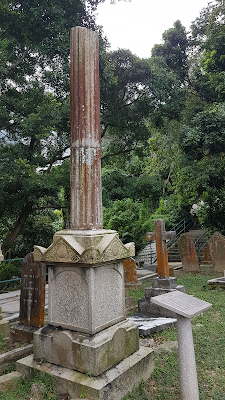

Walking along Queen's Road East from the Muslim Cemetery, you can reach the only Sikh temple in Hong Kong. The characteristics of Sikhs are wearing a turban, a big beard, and a dagger on their waist. At first, they were invited by the colonial government to serve as police because of their bravery and prowess in fighting. They gradually established the impression that Hong Kong people had on Indians - big heads in green clothes, Acha and Axing (most Sikh men are surnamed Singh, which means lion) )...The leader of the Sikhs is named Guru, and the last master is their scripture passed down from generation to generation; therefore, the way for Sikhs to worship is to listen to believers reading scriptures in the lobby (the Master's Hall). In addition to reading scriptures, theoretically, the Sikh temple also provides food and drinks 24 hours a day, called Langar, but now it has been stopped due to the epidemic.
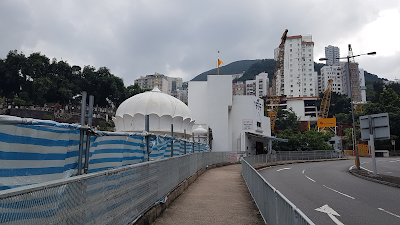
Along Queen's Road East and entering Kennedy Road, we can come to Pak Tai Temple in Wan Chai. Beidi originates from the North Star and Xuanwu beliefs, also known as Zhenwu Emperor, and is one of the main gods of Taoism. Pak Tai Temple has a long history. It is not only the main traditional religious building in Wan Chai, but also has a bronze statue cast in the Ming Dynasty. From Pak Tai Temple, go down the mountain via Shek Shui Qu Street, pass the Blue House, return to Queen's Road East, and walk to Hung Shing Ancient Temple. The Hung Shing Ancient Temple was originally a rock on the seaside, dedicated to Lord Hung Shing, who protected boat people from going out to sea safely. However, with the development and reclamation of Wan Chai, the Hung Shing Ancient Temple has not only been expanded, but also retreated to an inland part of Wan Chai. There is a doctor stationed on the second floor of Hong Sheng Ancient Temple to do a fortune telling, but when I looked at the price list, I saw that each charge costs 1,500 oceans, which is more expensive than seeing a specialist!
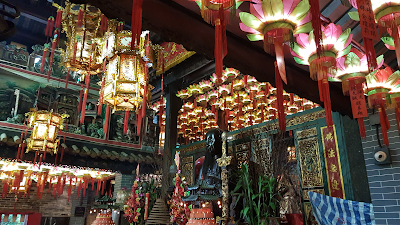
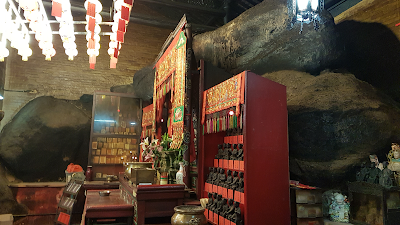
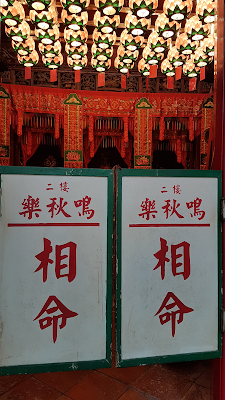
Walking north from Hong Sheng Ancient Temple, you can also pass by the Methodist Building and the Mormon Church with Western design. However, it was late at night, so I did not go inside to investigate. Counting the numbers, in just one day's journey (it would only take one hour if I didn't stay), I have already visited more than ten religious buildings. I believe this experience is rare in major cities in the world, and it is also described in detail. In its heyday, Hong Kong was so full of flowers that it was truly an international city. I wonder how long this flower of the Far East can continue to bloom?
(Travel Notes of Eighteen Districts Part 6)
Like my work? Don't forget to support and clap, let me know that you are with me on the road of creation. Keep this enthusiasm together!
